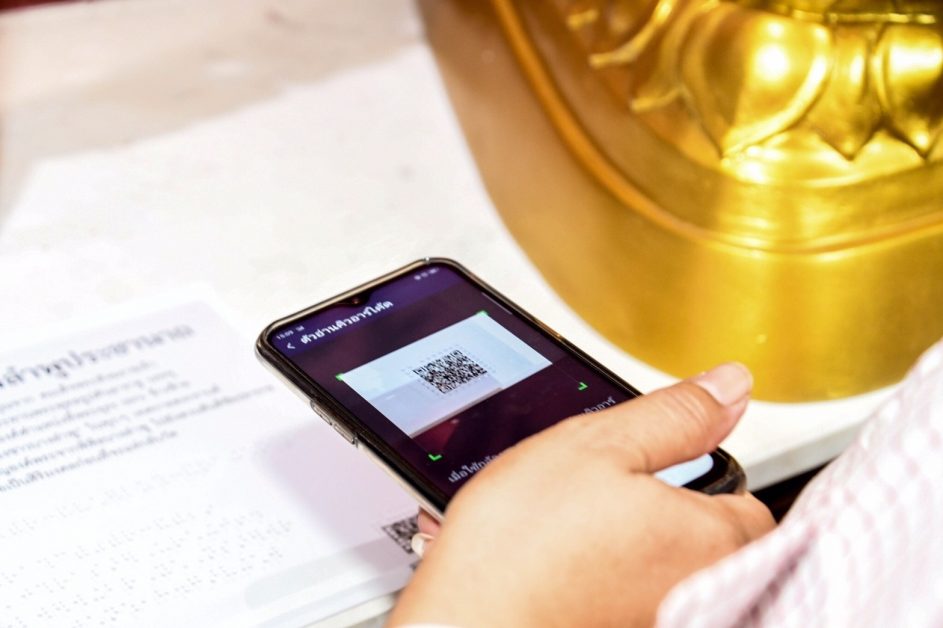Digital information has become a helpful resource in museums and learning centers for more in-depth knowledge seekers. However, access to digital information, like a QR Code in 2D format, is limited for people who are blind.
QR Braille for people with visual disabilities, adding braille beads into a frame around the QR Code, will make QR codes truly accessible to all. Ms. Suchitra Jirawanichkul, from the Center of Excellence in Universal Design, designed the QR Braille so that people can touch and spot a QR code’s position, then use a smartphone to scan for information, as well as listen to sounds. This helps increase and promote learning opportunities for those are visually impaired or blind.
The highlight of this invention is its simplicity in production. The single model can be applied to any QR Code, without the need to create a new design for each information.
With the current braille QR Code used abroad, the data and specific embossed braille characters must be produced in a 1:1 format together with the QR Code, which does not convey the QR Code’s identification and makes it unrecognizable to the blind. Another benefit is the use of acrylic braille, a material that can be easily printed using a paper braille printer, which is safe and a familiarity.
In this regard, the invention “QR Braille – QR code positioning device for visually impaired individuals” has been registered for a petty patent (Petty Patent No. 17871, dated June 16, 2021) and certificate of invention from the Department of Intellectual Property, Ministry of Commerce, Thailand.
The QR Braille is now used at the Banglamphu Museum in Thailand and at the Khon Kaen Treasury Museum.


